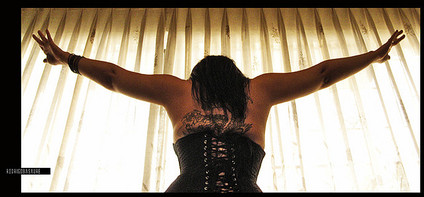August 26 Marks Women’s Equality Day
Women’s equality is the ability for a woman to choose to coexist with everyone else on the planet in a manner SHE chooses.
Feminism is the act of supporting this form of equality.
A woman has the right to exist in public spaces.
A woman has the right to choose how her body looks.
A woman has the right to end a relationship.
These sound like simple rights, don’t they? But like rape jokes, rampant misogyny in American culture can just be so subtle sometimes. Take a look at the scary examples below:
The Right to Exist in Public Space
A woman walks down the street and receives catcalls and “compliments” about her looks. Every woman you know has experienced this, no matter what she looks like. A woman rides the subway and gets sexually molested. Her right to exist in very public spaces is being violated with each action, yet society pays very little attention to this form of misogyny.
The Right To Choose How Her Body Looks
In her excellent post, An Open Letter to Everyone Who Has Told Women ‘Don’t Get Too Muscular’, Sophia Herbst writes, “When women strength train, it is an act of borderline social disobedience. ‘Don’t get too muscular’ is the phrase of choice used by people who are threatened by strong women to put them ‘back in their place’. And it’s working.”
Controlling women with the pressure to be thinner—weaker—is an incredibly subtle tool employed perhaps unconsciously by most, but none the less detrimentally.
The Right to End a Relationship
And really, the Christy Mack ordeal (woman is badly beaten by ex-boyfriend, she’s a porn star, he’s a highly-trained MMA fighter) is about more than the right to end a relationship. It’s about the right to be a sexual being, to choose how, as a woman, her sexuality is presented, and about the right to make her own choices. Dr. NerdLove writes an excellent post here: Christy Mack and the Crime of Being a Slut.
Today marks Women’s Equality Day, a date selected to commemorate the 1920 passage of the 19th Amendment to the Constitution, granting women the right to vote. But societal change is slow, and in many ways the right to vote wasn’t nearly enough. Women and men must speak up about the subtle, insidious inequalities and injustices the above examples represent. A woman can choose to fulfill whatever role she wants in society, in her family, in her own life—but she has a fundamental right to choose. That’s Women’s Equality.
Below is the Joint Resolution of Congress, issued a mere 43 years ago.
Joint Resolution of Congress, 1971
Designating August 26 of each year as Women’s Equality Day
WHEREAS, the women of the United States have been treated as second-class citizens and have not been entitled the full rights and privileges, public or private, legal or institutional, which are available to male citizens of the United States; and
WHEREAS, the women of the United States have united to assure that these rights and privileges are available to all citizens equally regardless of sex; and
WHEREAS, the women of the United States have designated August 26, the anniversary date of the passage of the Nineteenth Amendment, as symbol of the continued fight for equal rights: and
WHEREAS, the women of United States are to be commended and supported in their organizations and activities,
NOW, THEREFORE, BE IT RESOLVED, the Senate and House of Representatives of the United States of America in Congress assembled, that August 26th of each year is designated as Women’s Equality Day, and the President is authorized and requested to issue a proclamation annually in commemoration of that day in 1920, on which the women of America were first given the right to vote, and that day in 1970, on which a nationwide demonstration for women’s rights took place.
Image: Some rights reserved by Rodrigo Basaure

